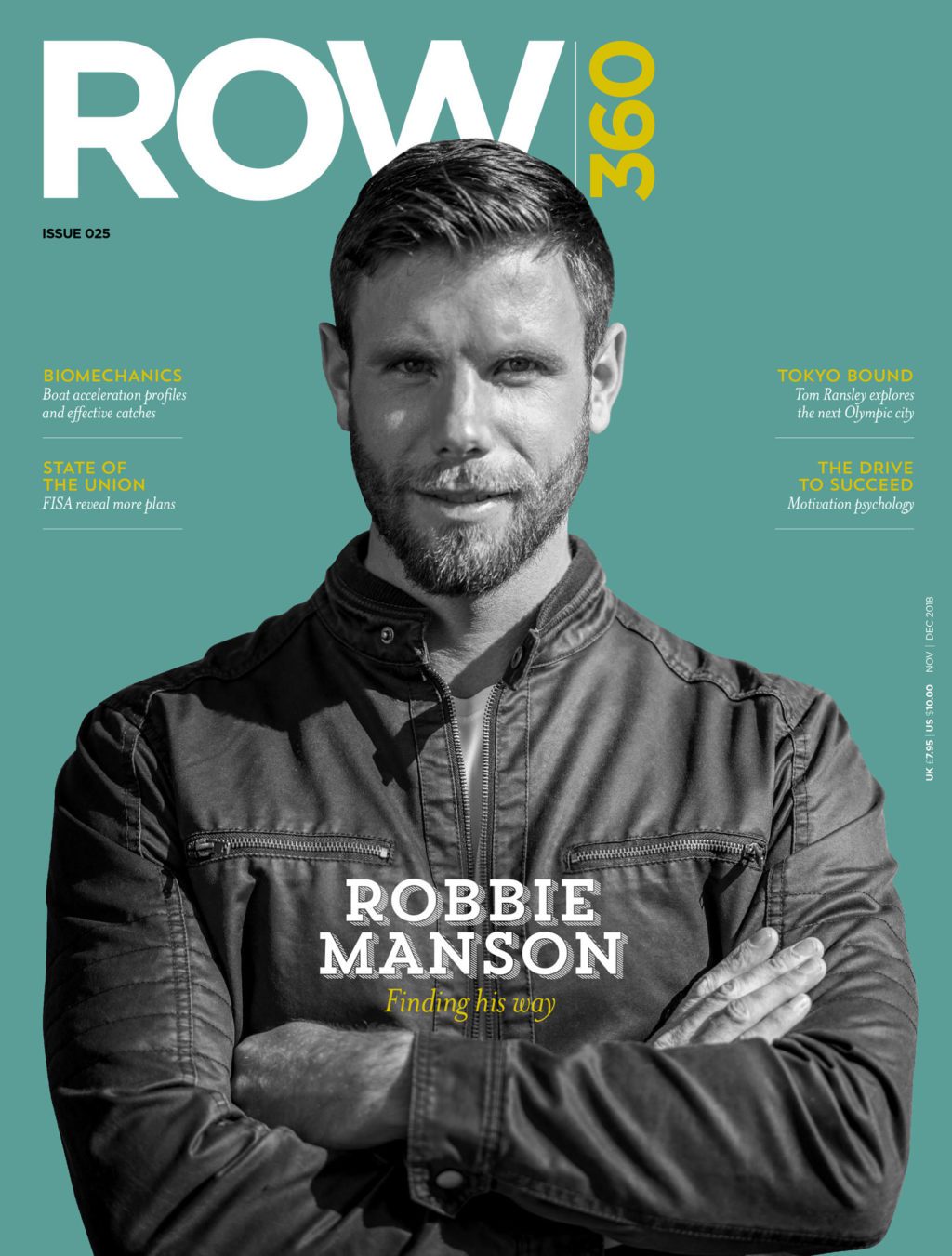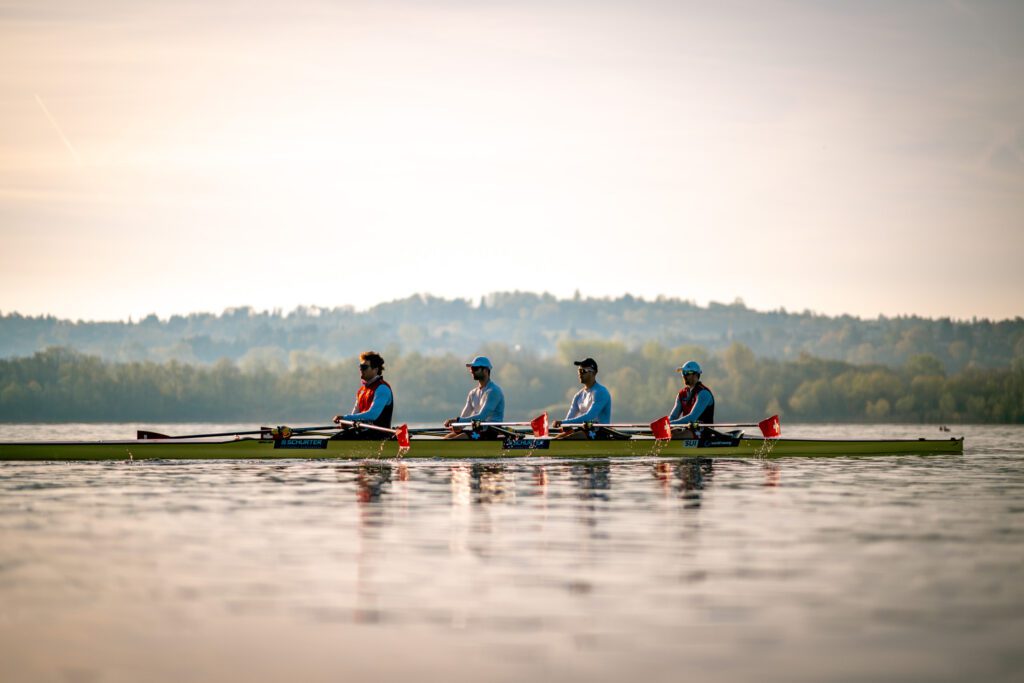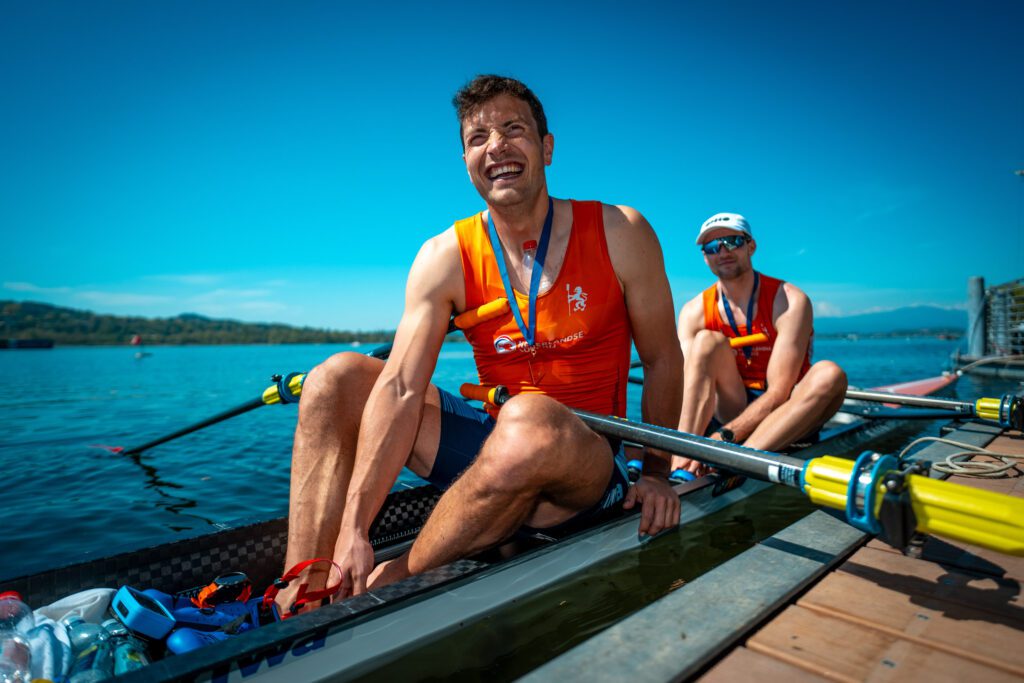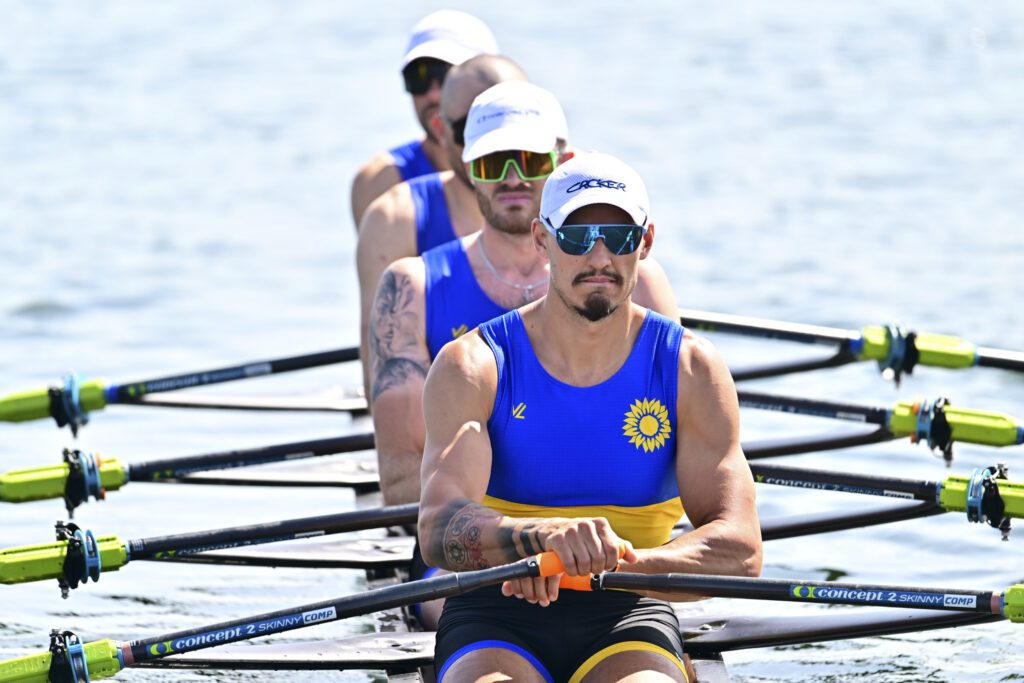Nobody has ever contested the indisputable fact that rowers are highly motivated individuals. It kind of goes hand-in-hand with getting up before the sun to work out for two or more hours in varying degrees of cold and rain. However, understanding the differences in motivation between individuals is a more complex topic. It’s a topic that I’ve been interested in since I joined the rowing community, and one that only became more interesting as I began to coach and became captain of my college team.
Understanding how individuals are motivated isn’t just a matter of interest for coaches, it’s essential to building and maintaining long-term team success.
Emily Spiegel
Let’s open our exploration of motivation with Andria and Nimisha. They both rowed for two years in high school and decided to row for the same college. They rowed in the same boats all throughout high school and their high school coach would rank them fairly evenly. Once they got to college though, Andria started getting faster. She consistently scored top erg scores for the freshman class and was moved up into the 1V8+ by the end of the year. By her senior year, Andria became one of the top performers on the team and was elected to the captaincy.
On the other hand, Nimisha stayed relatively consistent with her high school times throughout freshman year. She was seated in the 2V8+ and 3V8+ throughout freshman year. By her sophomore year, she was missing practices and rarely boated for races. She didn’t return to the team for her junior year.
What has caused this dramatic difference in outcomes between our two rowers? They performed evenly throughout high school; why did Nimisha fall behind in college? Understanding how individuals are motivated isn’t just a matter of interest for coaches, it’s essential to building and maintaining long-term team success.
Psychologists, philosophers, politicians, and rowing coaches have postulated theories of motivation for years (centuries, really). One such theory, championed by psychologists Ryan and Deci, among others, is known as Self Determination Theory. This model of motivation rationalizes that all people are inherently driven to learn, to grow, and to succeed. Proponents attempt to define the natural resources that people are born with which fuel their self-motivation and optimize achievement.
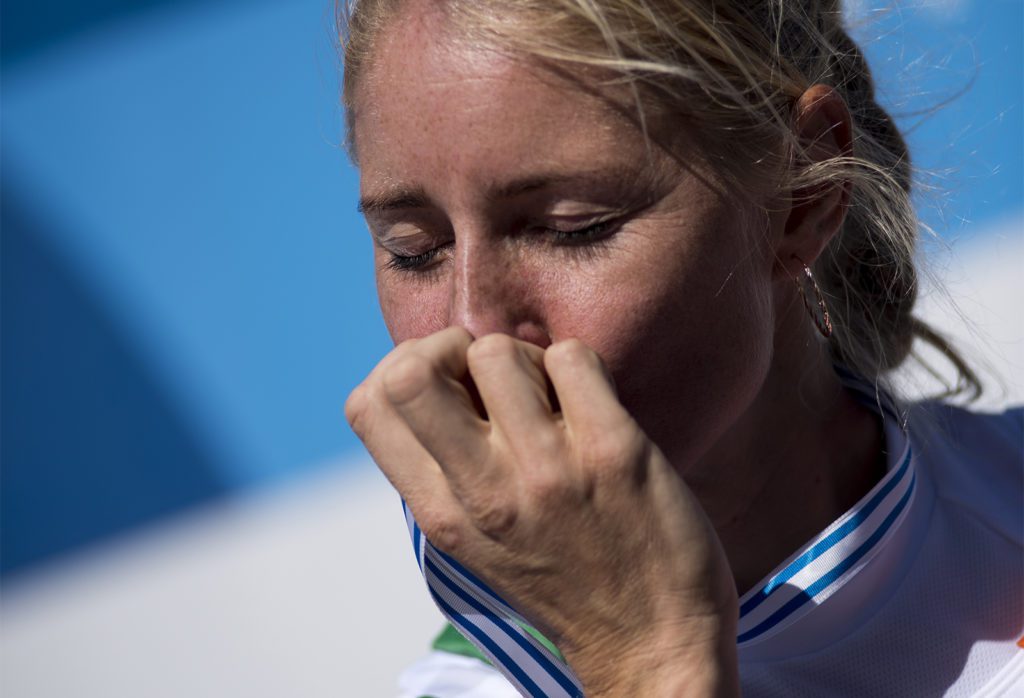
Photo Sanita Puspure, IRL W1x, 2018 World Rowing Championships, Plovdiv, Bulgaria.
Credit Benedict Tufnell
Ryan & Deci (1985) defined these natural resources as psychological needs. Specifically, the need for competence, the need for relatedness, and the need for autonomy. Self Determination Theory is not only focused on these needs, but also on conditions which are detrimental to these needs. People not only need autonomy, relatedness, and competence to be truly motivated, they also need environments which cultivate these needs, and not antagonize them.
Autonomy refers to an individual’s sense of volition, their perception that their actions contribute to their success. Competence signifies how capable an individual is to perform well. Relatedness denotes how comfortable and connected an individual feels with their community.
The needs listed above: autonomy, relatedness, and competence, contribute to highly motivated behavior. When these needs are fulfilled, an individual to thought to be intrinsically motivated. In other words, they are driven to grow and succeed because they value growth and success. Intrinsic motivation represents that inherent drive to do more than survive with passable capacity, but to push beyond the boundaries of complacent normality and achieve.
Toddlers completing tasks under the watchful and supportive eye of an adult perform those tasks better than those in a room with a cold and detached adult.
Emily Spiegel
There’s a litany of evidence supporting the value of intrinsic motivation. Toddlers completing tasks under the watchful and supportive eye of an adult perform those tasks better than those in a room with a cold and detached adult. Students ranked as more autonomous are found to be more likely to complete their education, receive a higher quality education, and be more engaged in the classroom.
Intrinsic motivation may be an inherent quality of all people, but when it’s not supported, it falters. In these cases, the Self Determination Theory proposes that people are extrinsically motivated. In other words, they are driven by factors external to themselves and do something for the sake of something (or someone) else, rather than doing it for the satisfaction of doing it.
Intrinsic and extrinsic motivation are not simple opposites, rather they represent scales on a spectrum of motivation. This spectrum covers the variable levels of fulfilment of the psychological needs we discussed earlier. As autonomy, feelings of competence, and relatedness increase, an individual moves further to the right on the scale. It’s important to note that this scale is not a developmental timeline. A person doesn’t simple move from left to right the more time they spend doing something. Rather, the environment someone is in enhances or degrades their motivation.
Let’s return to our rowers, Andria and Nimisha. We opened this article interested in why Nimisha failed to perform at the same rate as Andria, despite being evenly matched in high school. To better understand how they ended up performing so differently in college, we have to understand what motivated them to row in the first place.
Andria joined their high school crew team because she wanted to earn a college scholarship. She was driven to get faster and worked hard because each erg test and each race was a step closer to earning that scholarship. In this case, we’d say Andria has identified regulation. On our scale, that’s a fairly intermediate placement between extrinsic and intrinsic motivation. Andria recognized that showing up to practice and completing extra workouts were important steps in achieving her goal, which was significant to her.
Nimisha joined their high school team because she wanted to try something new. She previously played football and was ready for a new and interesting challenge. Practice was fun because she challenged herself to master a difficult skill. She decided to row in college because she wanted to pursue that challenge. We’d call Nimisha intrinsically motivated here. She valued the sport because it represented a chance to grow and learn.
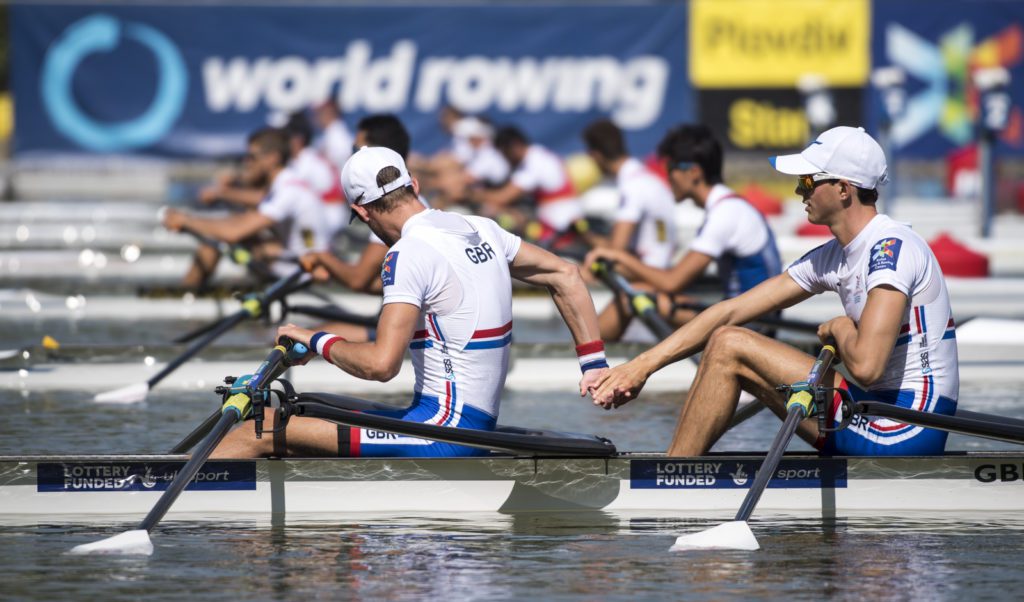
Photo GBR LM2x, 2018 World Rowing Championships, Plovdiv, Bulgaria.
Credit Benedict Tufnell
Once they got to college, Andria immediately made friends with some of the upperclassmen varsity team members. She consistently sought extra time with her coach to watch video and discuss technique. She gained a greater respect for the sport and loved competing with her teammates and with other colleges. She challenged herself to make the 1V8+ with the support of her friends. She felt guilty and anxious if she missed a practice, and went to practice while sick rather than miss a day. Being surrounded by high-performers on the team, she worked hard to prove she had earned the seat and got faster.
Eventually, Andria wanted to get faster simply because she liked the satisfaction of working hard. Having been welcomed into the team as a freshman, she valued teamwork and always sought to make others feel valued. She was well liked as an upperclassmen and eventually earned the captaincy. By the time she graduated, Andria had already signed up for a rowing program out of college to continue perfecting her technique and to continue stay active and fit.
We can look at Andria throughout college as an example of multiple types of motivation. As a freshman looking to fit in with her upperclassmen friends and impress her coach, we’d classify her into introjection regulation. She had internalized the values of others and was driven to fulfill their expectations. She felt guilty when she had to miss practice and sometimes sacrificed her health to attend practice. Her performance on the team was tightly tied to her own perception of her self-worth.
However, as she developed on the team she recognized more and more the value of the sport itself. She was driven to perform because she valued the reward of doing well. She continued to row after college because she wanted to continue to improve and learn. Andria was committed to cultivating a positive team culture to support other rowers and this helped lead her to the captaincy. In short, Andria worked hard because she wanted to, an obvious sign of intrinsic motivation.
On the other hand, once she joined the college team, Nimisha immediately became isolated from her teammates. She was homesick and missed her high school friends. She struggled to bond with others on the team and it was hard to feel happy at practice watching others make friends. Feeling alone on the team led to her feeling ambivalent about attending practice. Her performance suffered as a result and her coach began antagonizing her about the fall in her erg scores. She felt she wasn’t recognized for her good technique and was frustrated to see others being praised. Eventually she stopped trying to improve altogether. After a mediocre sophomore year, she decided not to return to the team.
Nimisha was intrinsically motivated in high school. She felt she was improving and learning in the sport and this was reinforced by supportive coaches and teammates. The lack of community, what we might notice as a lack of relatedness, led to her feeling alone on the team. But more significantly, criticism from her coach made her doubt her own competence. She slowly moved from being intrinsically motivated to being externally motivated. Her only motivation to go to practice was to avoid further criticism from her coach and eventually even that wasn’t enough to motivate her. Finally, Nimisha was amotivated, meaning she saw no value in continuing in the sport.
Everyone has known an Andria and a Nimisha in their time in rowing.
Emily Spiegel
Everyone has known an Andria and a Nimisha in their time in rowing. There are individuals who we recognize and praise for their drive to achieve, and there are those we are sad to see lose interest and motivation over time. As she grew in the sport, Andria shifted from identified regulation to introjection regulation and finally to intrinsic motivation. Andria was supported by her coach and team and found her needs for relatedness and competence fulfilled. Eventually, she felt strong and in control of her own success. Nimisha’s need for relatedness was not fulfilled by the college team. This led to her missing practice and the resulting decline in her performance and criticism from her coach made her feel incompetent. She lost joy in the sport and no longer valued the demands of rowing.
In this way, both Andria and Nimisha demonstrate how our motivational spectrum is not a timeline, and how people can move from one motivational pattern to another based on their own development and their environment. So what can you, as a coach or team leader, do to help create environments which cultivate healthy and productive motivation patterns?
First, to create an environment which encourages autonomy, consider allowing your rowers to guide workouts or stretches. In off-season conditioning, work with the team to reinforce the idea that their training is in their hands. Encourage them to design their own workouts and find training that makes them feel fit and motivated to work outside of regulated practice. Extend this principle of self-guiding fulfillment to the team culture itself. Discuss the fact that each rower is responsible for contributing to a high-performing and supportive team.
This plays itself into creating an environment of relatedness. Rowers need to feel secure in their placement in the team dynamic and feel that they are surrounded by a support system. This encourages attachment to the team and to the team’s success.
Finally, like all people, rowers need to feel acknowledged for their successes and competent even in their struggles. Coaches need to walk that fine line between criticizing a rower for mistakes, and guiding that rower to do better through focus and disciple. If, through a series of negative interactions with their coach, a rower begins to feel that issues with their technique are not resulting from lack of experience, but rather from personal failure or a lack of ability to improve, they will become stagnated. By finding ways to positively encourage all rowers, even those who are struggling, coaches will foster environments that support an individual’s basic need to feel competent at what they are attempting.
Motivation is a complex topic and certainly a more individual topic than can be adequately covered in one article. However, consider sharing this article with your team and having a serious discussion about the needs of each rower to develop and maintain productive motivational patterns. Even for your own purposes, take a moment to list out experiences you’ve had in the sport which made you feel more driven. What specifically motivated you to do well in a particular race or in a particular season? By considering these experiences in relation to your own motivational pattern, you can find ways to be more productive and more engaged in the sport.
This article first appeared in
